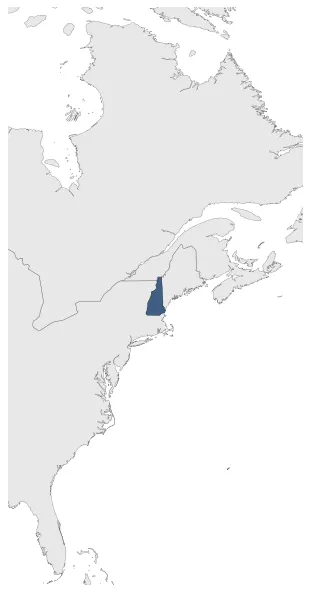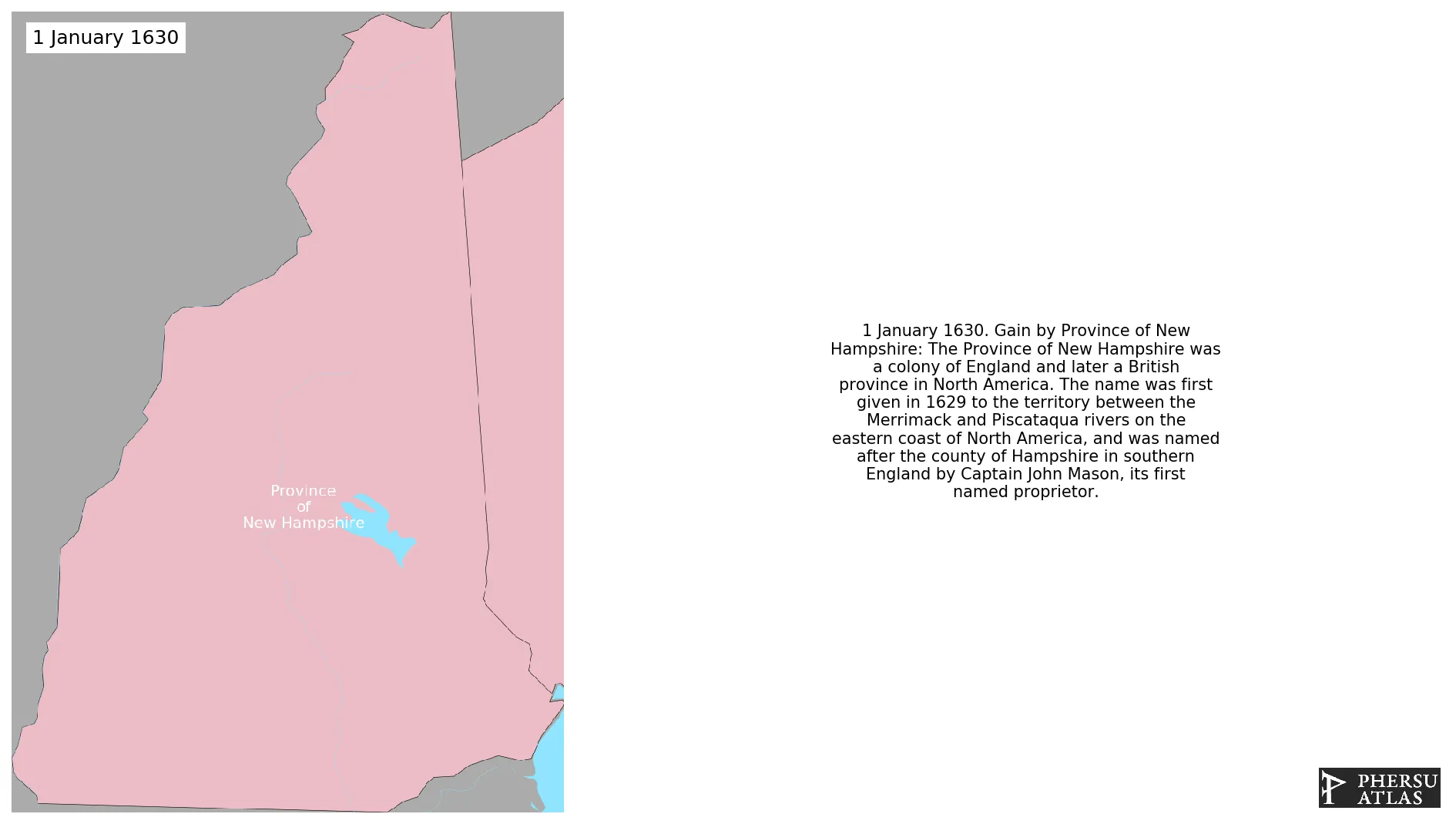 Province of New Hampshire
Province of New Hampshire
If you are looking for the page with the statistics about this polity you can find it here:All Statistics
Was a colony of England and later a British province in New England.
Establishment
January 1630: The Province of New Hampshire was a colony of England and later a British province in North America. The name was first given in 1629 to the territory between the Merrimack and Piscataqua rivers on the eastern coast of North America, and was named after the county of Hampshire in southern England by Captain John Mason, its first named proprietor.
Chronology
Interactive Chronologies with maps are available in the section Changes Navigation
Was a revolution in England and Scotland that led to the deposition of Catholic King James II.
November 1688: By November 1688 William of Orange, who was Stadtholder of the Netherlands, and his wife Mary, were in control of England and Wales. They would later become King and Queen of Great Britain.
Was the war of independence of the United States of America (at the time the Thirteen Colonies) against Great Britain.
July 1776: United States Declaration of Independence: the Thirteen Colonies at war with the Kingdom of Great Britain regarded themselves as thirteen independent sovereign states, no longer under British rule.
2.1.Invasion of Quebec (1775)
Was the unsuccesful invasion of the British Province of Quebec by the United States Continental Army.
May 1775: Capture of Fort Ticonderoga.
2.1.1.Benedict Arnold's expedition to Quebec
Colonel Benedict Arnold led a force of 1,100 Continental Army troops on an expedition from Cambridge in the Province of Massachusetts Bay to the gates of Quebec City.
September 1775: Continental Army troops led by Colonel Benedict Arnold sailed from Newburyport, Massachusetts to the mouth of the Kennebec River.
January 1642: In 1641, the communities in the Province of New Hampshire were placed under the government of the Massachusetts Bay Colony, under the leadership of Governor John Winthrop.
January 1680: In 1679, Charles II issued a colonial charter for the Province of New Hampshire and appointed John Cutt as President. Cutt was a prominent merchant and politician who played a key role in the early governance of the province.
March 1702: As William III of England was also the de facto ruler of the Dutch Republic (as Stadtholder of Holland, Zeeland, Utrecht, Guelders, and Overijssel in the Dutch Republic), the Personal Union between Netherlands and Great Britain ended at his death.
Disestablishment
July 1776: United States Declaration of Independence: the Thirteen Colonies at war with the Kingdom of Great Britain regarded themselves as thirteen independent sovereign states, no longer under British rule.
Selected Sources
Declaration of Independence of the United States of America, https://www.archives.gov/founding-docs/declaration-transcript
Frothingham, R. (1903): History of the Siege of Boston, and of the Battles of Lexington, Concord, and Bunker Hill: also an Account of the Bunker Hill Monument. Little, Brown, & Company, pp. 100-101
Israel, J. I. (1995): The Dutch Republic: Its Rise, Greatness, and Fall, Clarendon Press, pp. 959-960
.svg.png.webp)

 Province of New Hampshire
Province of New Hampshire




























